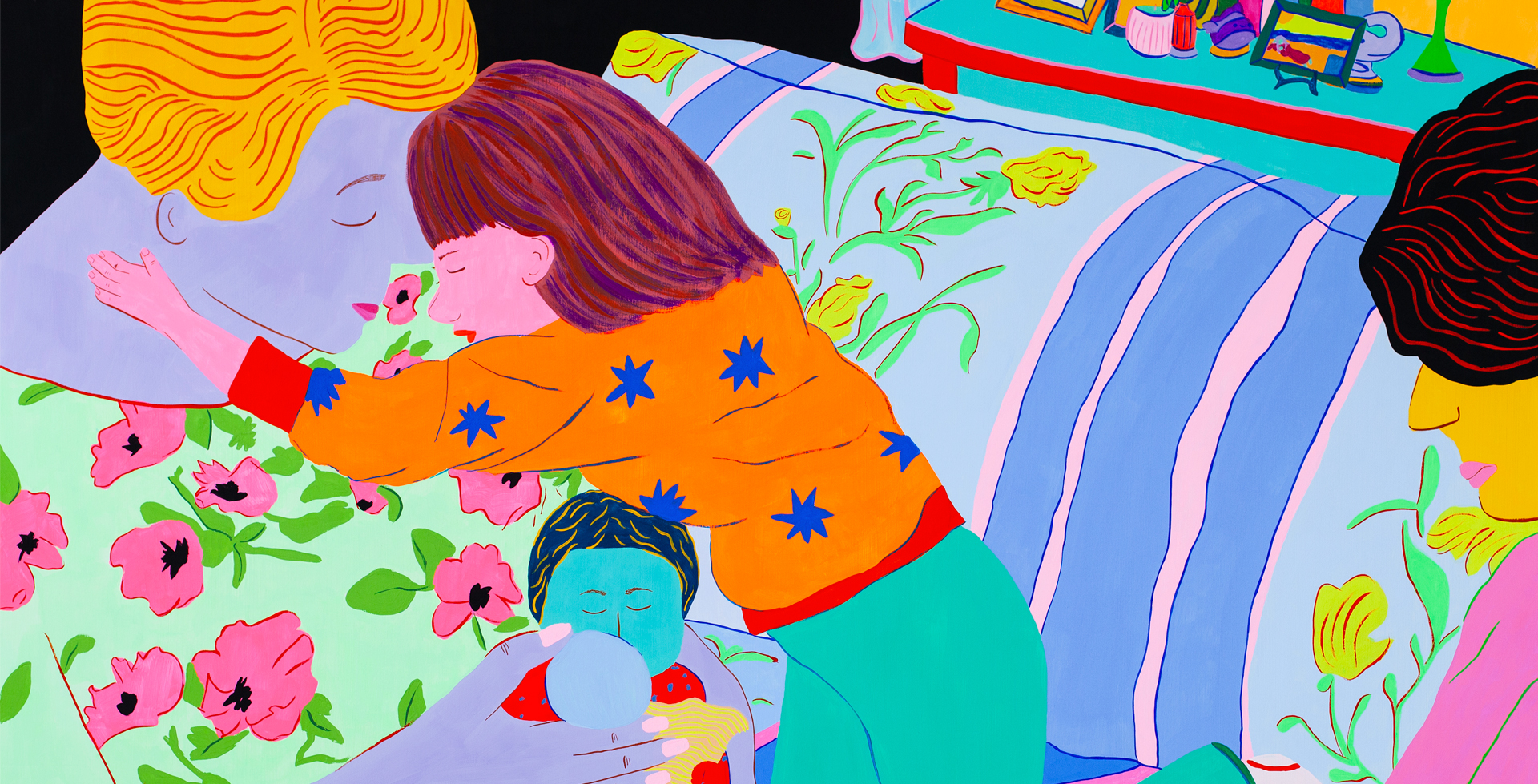
By Vincent Solis | @vincegsolis
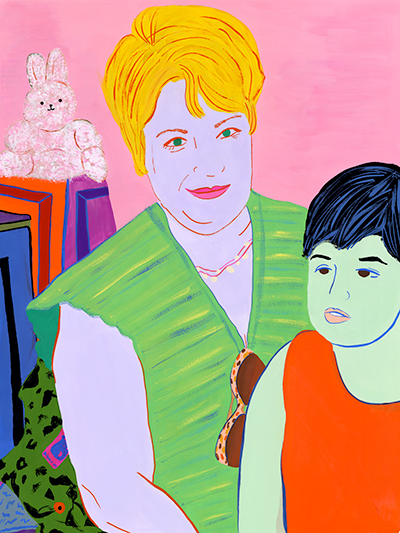
It is often too easy to forget the lives our loved ones have lived before us, especially when we tie them to roles such as mom, dad, grandpa, abuela, etc. The people in family photo albums can sometimes seem like strangers, and our personal memories of them are easily distorted by time and the inevitable idealization of the past. So, how does someone remember a loved one? How does someone reconstruct the identity or the memory of the identity of a loved one who lived a whole life of experiences before that someone was even born? For Alexandria Canchola, the process was quite literally reconstructing parts of her abuela’s life inside the Presa House Gallery.
Acting as a type of wallpaper, Canchola covers the foyer of Presa House with bright risograph prints of her late grandmother, Concepcion. Each image is a portrait of Concepcion at different points in her life, originally gouache paintings of the original photos from Canchola’s own family photo album. Above each likeness is a distinct name for Concepcion held by different people. Of course, to Canchola, Concepcion was her Abuela, her Queen, while to her younger family members, they called her grandma or mima. To close friends, she was Conchita, and to her husband, Canchola’s abuelo, she was la Jefa, translated in English as the Boss. The bold, bright palette of the prints and the risograph method itself are reminiscent of the 1980s, specifically, the intricate and colorful patterns in fashion at the time.
painting a younger version of her Abuela was similar to painting a stranger, a woman she had never met because she wasn’t abuela yet.
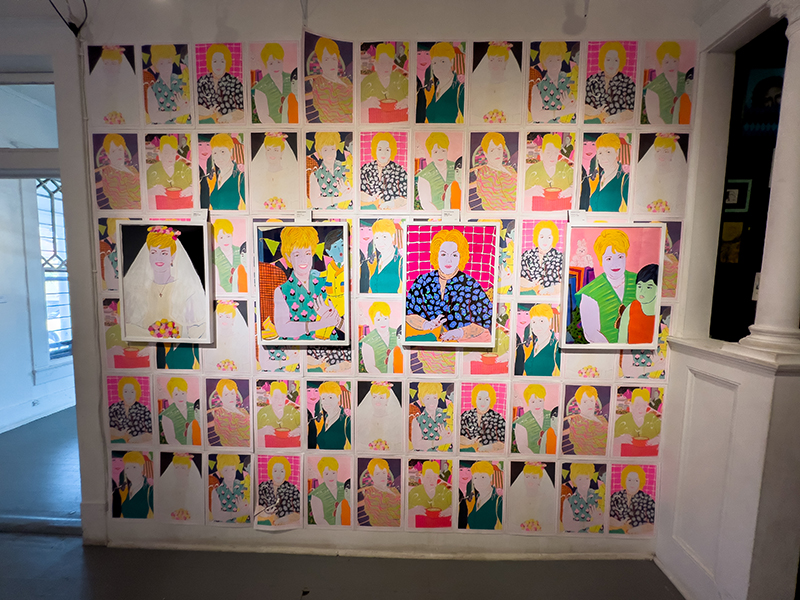
Canchola expresses the difficulty she had when painting younger versions of her Abuela, stating she feels so much of the expression from portraits come from knowing the person; for her, painting a younger version of her Abuela was similar to painting a stranger, a woman she had never met because she wasn’t abuela yet. Hearing this made me rather emotional; I could empathize with Canchola’s loss. Looking at pictures of my paternal grandmother, I often don’t recognize her younger self; I only knew my grandmother during her older age, while she was battling breast cancer. Like Canchola, my young grandmother is someone I have never met and, therefore, seems like a stranger. A method for reconstructing her abuela’s identity was remembering the precious objects that, for Canchola, are emotionally tied to her Abuela and trigger specific memories—Items such as her abuelas favorite perfume or chewing gum or her classic Bialetti moka pot.



In a separate room, Canchola perfectly executes this approach of evoking memories from objects in her cardboard room installation, La Cocina, where she completely reconstructs her abuelas kitchen from memory and photo reference. The cardboard kitchen, similar in palette to the colorful prints, comes complete with a dining table, kitchen appliances, and all the signs of an active and lively home. The life-size scale of the installation invites the viewer directly into Canchola’s childhood memories of her Abuela kitchen, so directly you can almost smell the rich aroma of the café Bustelo. For Conchita, the familiar smell of café bustelo might have tethered her to memories of Cuba; for many immigrants, making foods reminiscent of home is the easiest way to hold onto one’s cultural heritage.
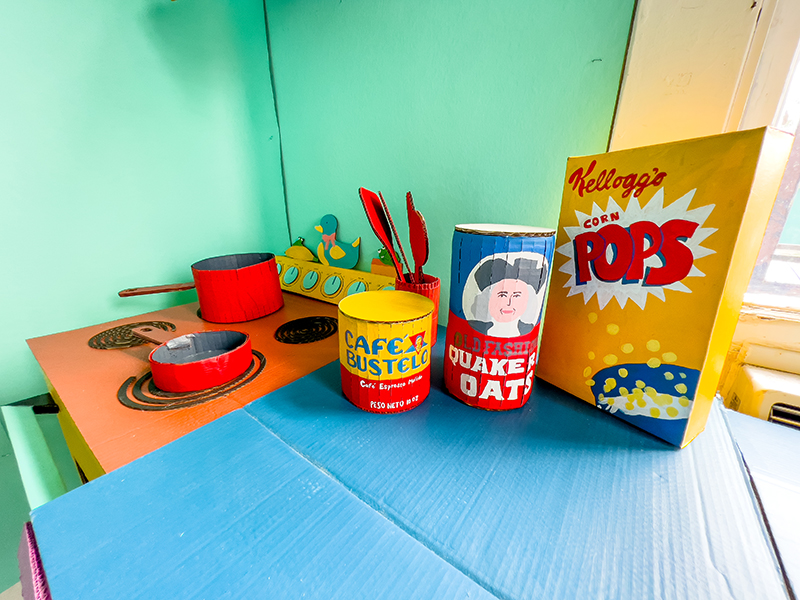
Through this study of her abuelas life, Canchola can remember Conchita in a new light and reexamine the roles she played in her own life. Her abuela often passed onto Canchola her traditional gender roles, such as ensuring she knew how to cook and care for a home and a husband. While teaching Canchola how to fit into the patriarchy, Conchita herself was speaking up to her husband and ultimately acting as the matriarch of her family; she was la Jefa, after all.
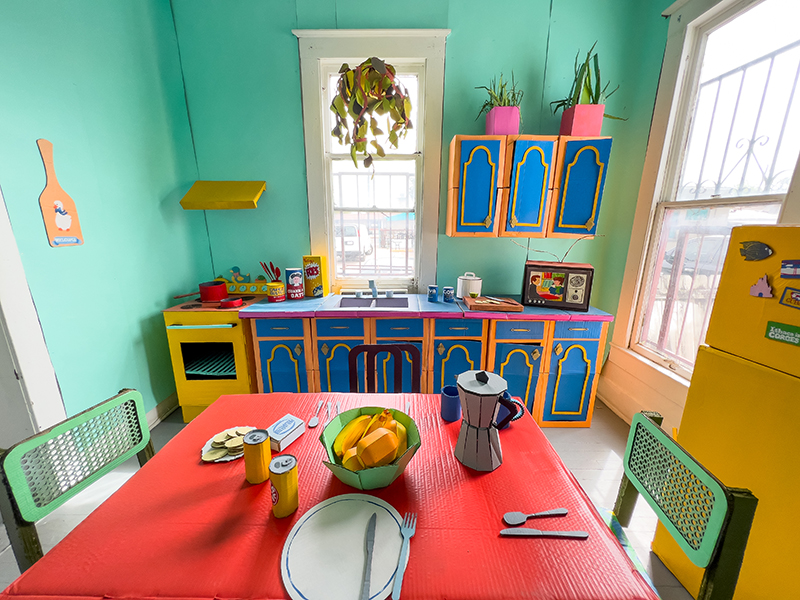
Conchita’s resilient personality was apparent in her refusal to speak English or stop cooking her authentic Cuban meals. This method of assimilation, or rejection of assimilation, is common among the Latine diaspora and reflects aspects of my own life. My maternal great-grandmother (bisabuela) immigrated to the United States with several children after her husband passed away. For years, she worked to raise and support her family, all while being unable to read, write, or speak English, and to this day, she still does not speak English. What I identify in my bisabuela as a resilient spirit proud of her heritage has unintentionally caused a language barrier between us. My story of me and my bisabuelas language barrier struck a chord with Canchola, who herself says her Spanish is a bit rusty and out of practice since her abuela passed.
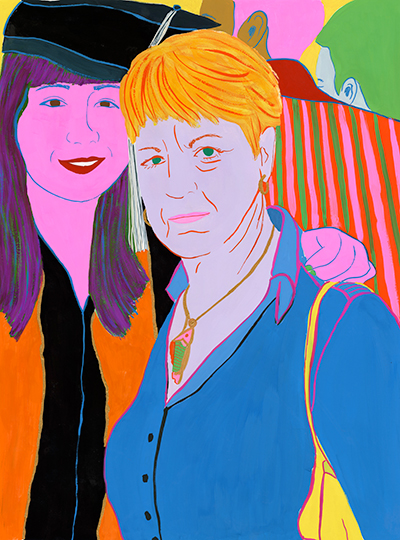
Although Cubans don’t exactly celebrate Dia de los Muertos (they have a similar holiday named Dia de los Fieles Difuntos), the significance is the same. It is a time of year to commemorate those who are with us in spirit, to immortalize them as we knew them, and to remember them as others did. We can all learn from Canchola’s process of remembering our loved ones’ lives by reconstructing their past in our memories, reimagining them and who they were to the many people they affected. Through this, we can get closer to understanding our family’s process of assimilation, as is a common struggle for many immigrants, first, second, and third generation. At the very least, it allows us to expand upon our memory of them and enrich and deepen our ability to remember.
Alexandria Canchola: Yours to Keep is on view at Presa House Gallery through November 3rd, 2023. The Closing Reception will be held First Friday, November 3, 2023.
Edited by Rigoberto Luna. Photos Courtesy of the Artist.

